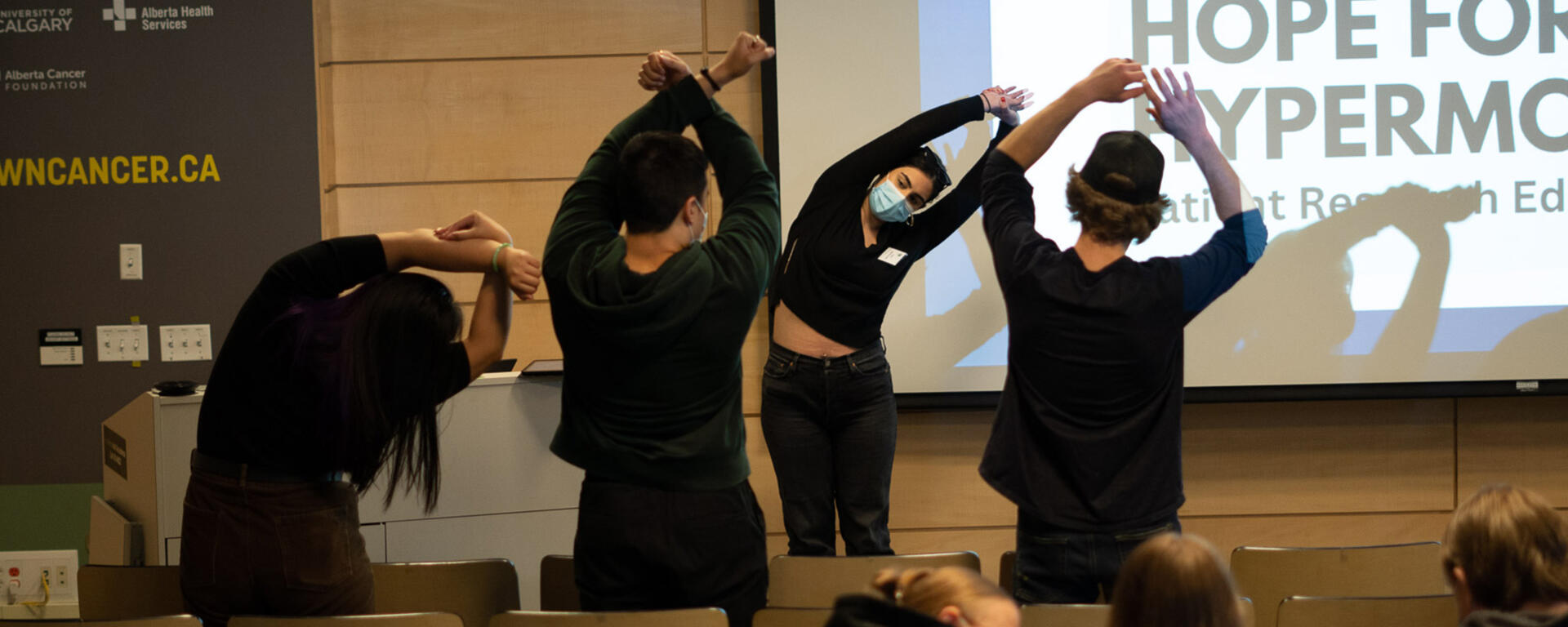Patients, family members learn from physicians and researchers
For most patients undergoing rehabilitation for joint issues, it’s a lack of motion that’s the issue — not enough range of motion in knees or hips or shoulders. For those with hypermobility issues, however, too much motion is equally as debilitating.
On April 29, an event called Hope for Hypermobility at Foothills Medical Centre was a chance for patients and family members to hear about hypermobility research going on in Calgary, ask experts about related conditions, and meet others living with similar challenges.
“Some patients living with these conditions experience joint subluxations or dislocations, or have frequent sprains and strains,” said event organizer Dr. Ranita Manocha, an AHS physiatrist and researcher at Foothills Medical Centre.
“Some patients live with chronic pain and fatigue. Some experience problems with their blood pressure, allergic reactions, gastrointestinal problems, and anxiety.”
Over 30 people attended the event in person, along with 40 who joined on Zoom – including participants from the United States, United Kingdom, Germany and Spain.
Cassidy Friesen, who was diagnosed with hypermobile Ehlers-Danlos Syndrome attended the event and was excited to learn about the ongoing research.
“I think the biggest value for me was just the recognition that this is a real disorder that has real symptoms,” she says.
Friesen says her diagnosis came after 12 years of frustration and painful symptoms.
“I really started noticing things were sort of wrong when I was about 12. I was competitively swimming and I was having repeated shoulder dislocation,” she recalls.
“It just kept getting worse and more symptoms started popping up. And I would go to doctors and they'd be like, ‘Nothing's wrong. It all looks good.’ “
Friesen even shared word of the Hope for Hypermobility event with her family doctor.
“He signed up for it and came, which was amazing! He took time out of his personal day on a Saturday to come and learn about it.”
The event was also an opportunity for researchers from the University of Calgary and Mount Royal University to hear directly from patients about what they thought would be important to research in the Calgary Zone next.
“Hypermobile spectrum disorders and the hypermobile Ehlers-Danlos Syndrome can cause significant functional impact,” says Dr. Manocha. “This was a great opportunity for researchers to learn from patients about this poorly understood condition.”
The result was a win-win for researchers, clinicians, patients, and family members – many of whom reported that they struggled with painful symptoms for years before being diagnosed.
Dr. Manocha has started a Connective Tissue Disorders Rehabilitation Clinic at Foothills Medical Centre and would like to hold future events to connect patients with researchers and share their hope for new treatments into the disease.
Information about Dr. Manocha’s research lab can be found at https://cumming.ucalgary.ca/labs/better-mobility


